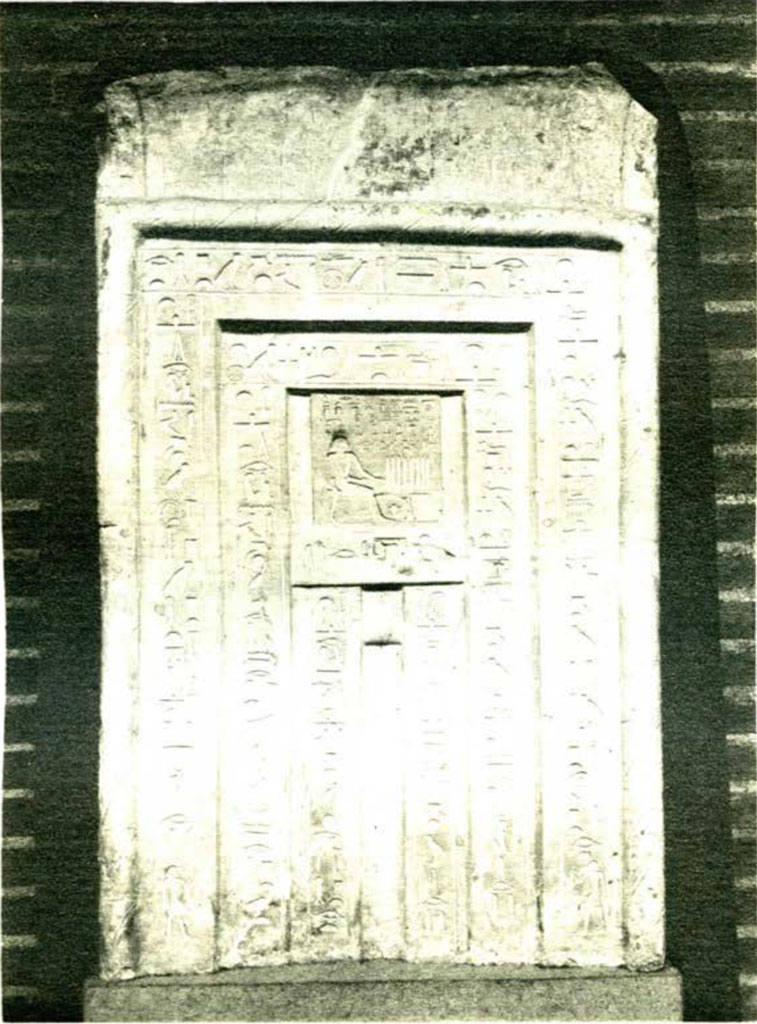
Museum Object Number: E14318
THIS false door of limestone came from the tomb of Ptah-Arit, or Ari, as he is variously called in the inscriptions. The former name means, literally, “The god Ptah has made.” The door belongs to the Sixth dynasty (about 2600 B. C.), and probably came from Sakkara. When in situ, it must have been erected in the chapel of the tomb, near the upper end of the concealed shaft which was situated just outside the chapel and lead from the underground burial chamber to the top of the tomb. Thus, according to Egyptian belief, the “double” of the deceased was enabled to leave the burial chamber, pass up the shaft, and enter the chapel by mean of the false door, in order to partake either of the offerings represented on the door itself or of actual offerings placed in the chapel by the relatives or by the priest paid for that purpose.
The inscriptions ask Osiris, the great god of the dead in the other world, Anubis, the mortuary god, and Ptah-Seker, the god of Memphis and Sakkara, for various offerings, some of which are mentioned in the texts before the seated figure of Ptah-Arit himself, who is seen in the panel near the top of the monument. The thousands of offerings include two kinds of linen, pots of incense, oxen, gazelles, geese of two kinds, cakes, and jugs of ale. In front of the deceased are an altar table and a libation pot.
Ptah-Arit held the offices of scribe of the Temple of Ptah at Memphis, treasurer of the god, scribe of the offerings of the god, great libationer priest of Ptah, divine father, eldest noble in the Henu-boat of Seker, and inspector of plants. He says he was “honoured of the king, and a friend of Pharaoh.” The Henu was a sacred boat used in ceremonies connected with the god Seker.

